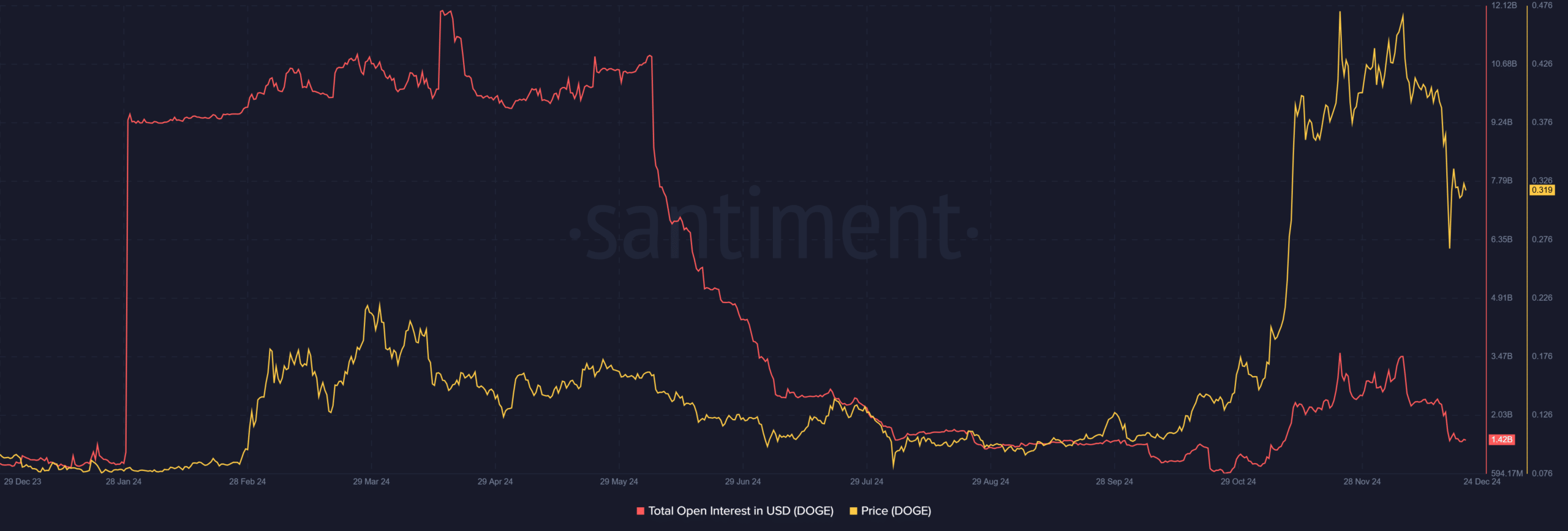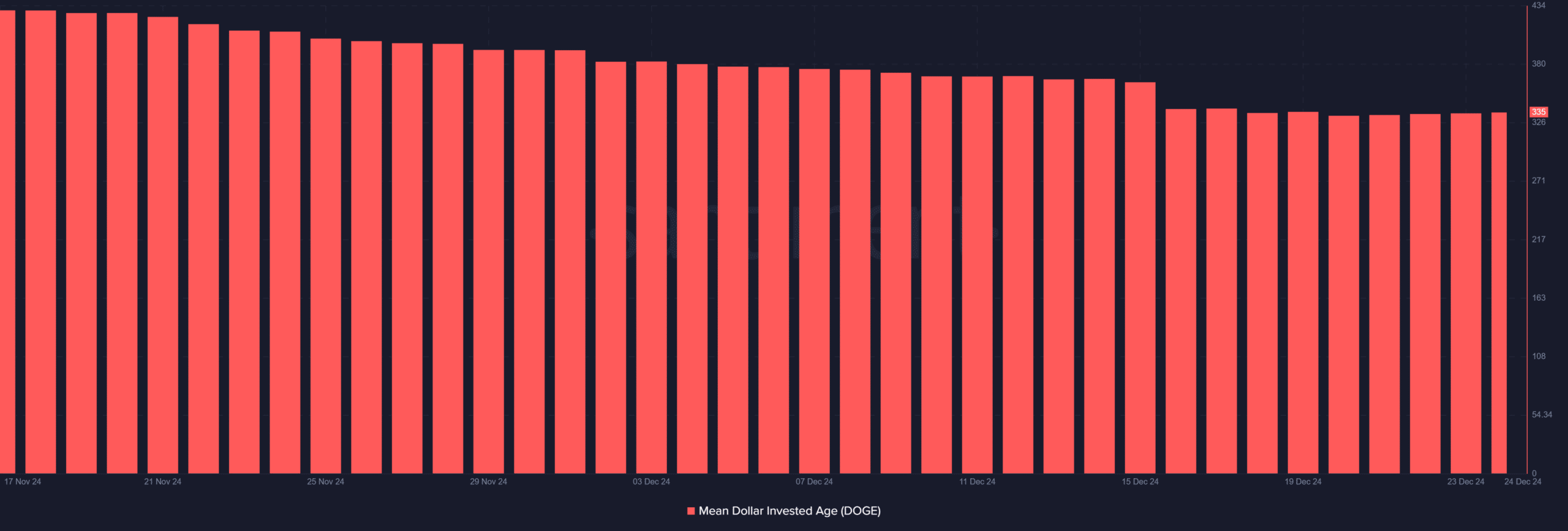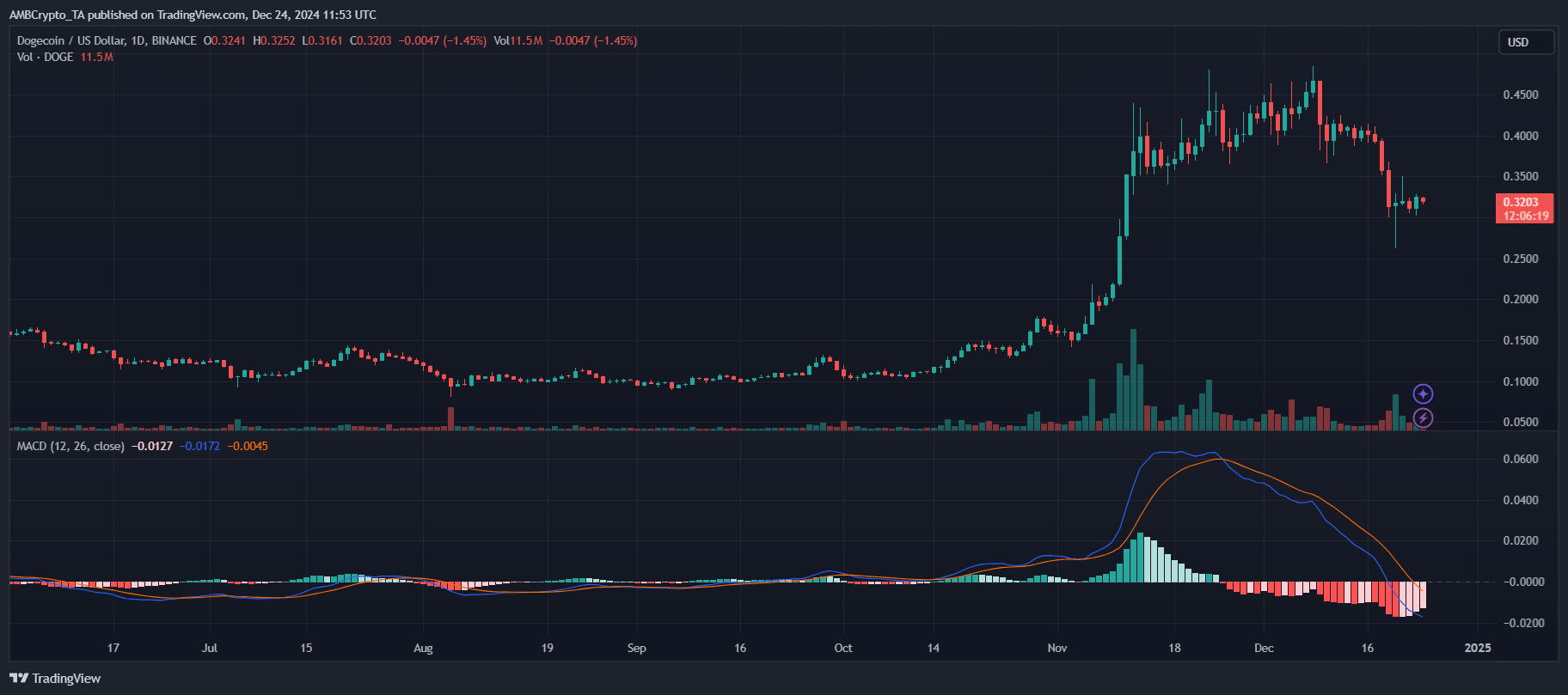Dogecoin’s open stake fell to $1.42 billion, a stark contrast to its April peak of $12 billion. A sustained decline in OI, especially during the recent DOGE price decline to $0.32, indicates that traders are unwinding their positions amid reduced optimism.
This downward trend in OI often indicates a loss of confidence in near-term price recovery.
Coupled with a 20% drop in DOGE price over the past week, the decrease in OI suggests traders are cautious about opening new positions, signaling potential for further correction unless sentiment of the market does not reverse itself.
MDIA signals stagnation and cautious sentiment
The MDIA indicates that Dogecoin holders are increasingly choosing to hold their assets rather than trade them.
MDIA, which tracks the average age of coins on a blockchain weighted by purchase price, has steadily increased to 335 days. This trend suggests that long-term holders are not actively trading or reallocating their assets, indicating market stagnation.
Historically, a rise in MDIA is correlated with a decrease in liquidity and a drop in demand, often considered a bearish signal.
If this upward trajectory persists, it highlights a lack of new capital or speculative activity in the DOGE market, which aligns with the recent price decline. This supports the narrative of cautious sentiment dominating Dogecoin’s near-term outlook.
On the daily chart, Dogecoin is struggling to reclaim critical support levels following its recent downturn.
The price fell below the $0.35 threshold, which previously served as an important support level, suggesting that bearish momentum continues to dominate.
The MACD indicator confirms this bearish outlook. At press time, the MACD line is positioned in negative territory, reflecting downward momentum. The histogram shows decreasing bearish pressure, but until a clear bullish crossover occurs, recovery prospects remain limited.




